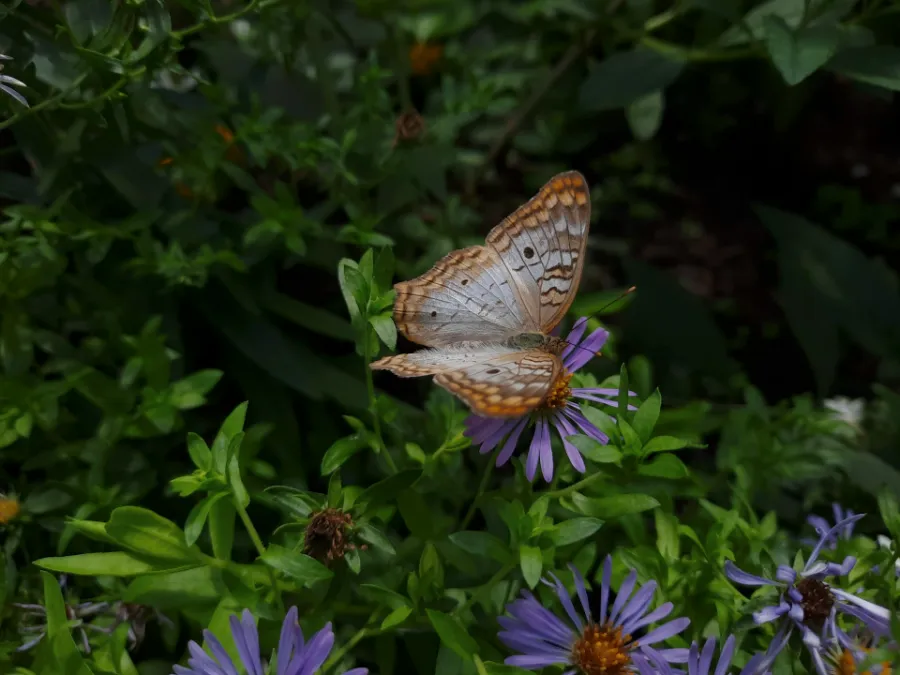
While certain weeds can be beneficial for butterflies like milkweed and thistles, they’re not considered to be essential and are often undesirable in a manicured, low-maintenance garden. Luckily, there are plenty of other ways that you can create a butterfly-friendly garden without allowing weeds to overgrow and consume your outdoor space. Butterflies are more attracted to nectar-rich flowers which are essential for providing the food sources required for healthy butterfly growth.
If you are looking to eliminate those unaesthetic weeds from your garden, it’s important that you do it organically and sustainably to avoid using harmful pesticides and chemicals that can negatively affect insects like butterflies. Sustainable weed control methods allow butterflies to still fly freely in your garden without any trouble to give you a beautiful, biodiverse garden.
This guide will explore the most organic and sustainable ways that you can control weeds in your home garden and create a butterfly-friendly garden all year round. Continue reading to find out more.
Organic Weeding Solutions
1. Mulching
Mulching creates a physical barrier that smothers existing weeds and prevents new ones from germinating. It works by blocking out sunlight, which is essential for weed growth, and hindering their access to the soil surface, mulch significantly reduces weed competition for water, nutrients and space. A thick enough layer of organic mulch, such as wood chips, straw or compost, deprives weed seeds of the light they need to sprout, leading to a noticeable decrease in weed populations. This creates the perfect atmosphere for butterflies to roam freely in your garden.
2. Hand Pulling
Sometimes the old-fashioned way is the best way with hand pulling weeds out the ground with your hands being one of the most effective methods of controlling weed growth. You’ll need to regularly check up on your garden to spot any overgrowing weeds and you can then get your hands dirty by pulling them up. This is very sustainable, as you don’t need any extra equipment to get the job done.
3. Pruning
Handheld manual tools are far more sustainable and eco-friendly than using any form of machinery in your garden. Pruners are an extremely useful tool that has many purposes in your garden from chopping off excess branch growth on trees to snipping away any weeds that are damaging the appearance of your outdoor space. You can find a variety of different size and shape pruners, each perfect for different uses around the garden. Even the smallest set of pruners can be good against weeds.
4. Weed Barriers
Some weeds are more stubborn than others and for the most stubborn, you should consider laying down weed barriers to prevent any excess growth. Weed barrier fabrics are very effective for this, as they are porous materials that allow air and water to get into the soil while blocking out sunlight. This effectively smothers the weeds in their tracks and stops them ruining your garden. Biodegradable fabrics can also be purchased to boost sustainability further.
5. Natural Weed Killers
While a lot of weed killers contain harmful chemicals that can ruin the health of butterflies, there are natural weed killers that can be purchased or made from home that won’t have any negative impact on wildlife in your garden. Common effective methods include boiling water, vinegar, salt, mulch, and even a combination of these ingredients.
6. Crop Rotation
Rotating crops is a very effective way to reduce weed growth, especially in larger gardens where you can grow herbs. To do this, you should alternate between plants in a specific sequence so that it disrupts the cycle of weeds and prevents them building up. Introducing different planting times and competitive advantages that limit the growth and spread of specific weeds will also benefit a butterfly-friendly garden.
7. Biosolarisation
Biosolarisation is an effective method that utilises compost and transparent plastic sheeting to heat the soil, killing weed seeds and pathogens. You can find plastic sheeting made from recycled materials to ensure that you’re remaining eco-friendly and it actually works a lot better long-term for weed elimination compared to spraying them with weed killer.
8. Tillage
Stihl Garden Tillers are a very healthy practice on farmland, as it effectively kills weeds by disturbing the soil and burying the weed seeds deeper underground. It can also be done in your own garden with the use of a home tiller that loosens the soil while simultaneously uprooting weeds, instead of burying them, and removing other unwanted debris. This can help you to create the perfect garden environment for many types of butterflies to enjoy.
Final Thoughts
These techniques not only help maintain an aesthetically pleasing garden by removing weeds but also ensure a safe and healthy space for butterflies to flourish. You should embrace as many of these organic solutions as you can to create harmonious coexistence of a well-maintained garden and a vibrant, biodiverse habitat for butterflies all year round.

